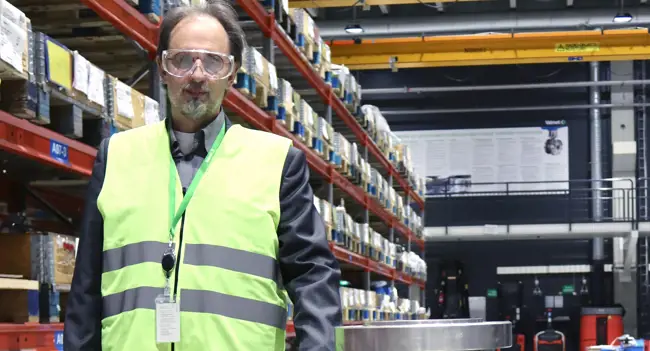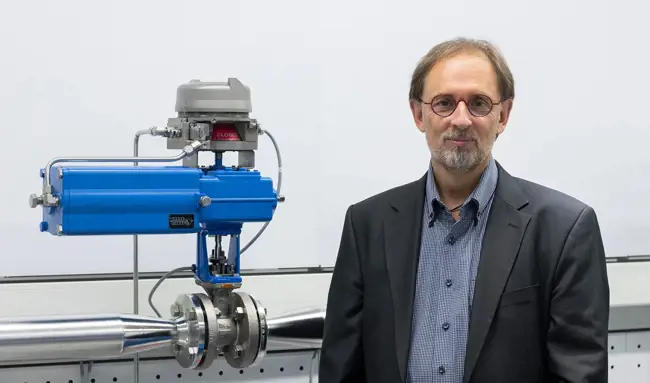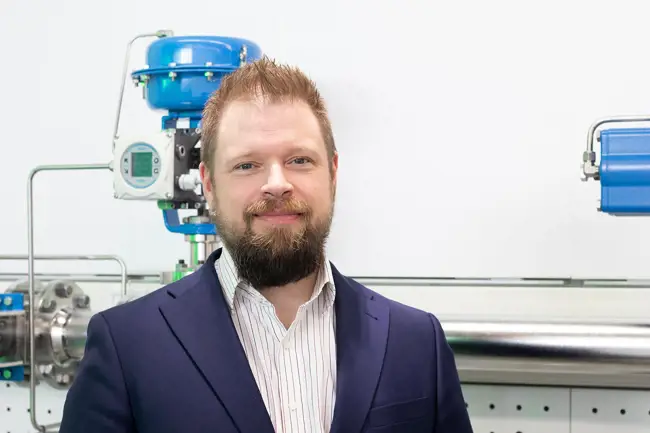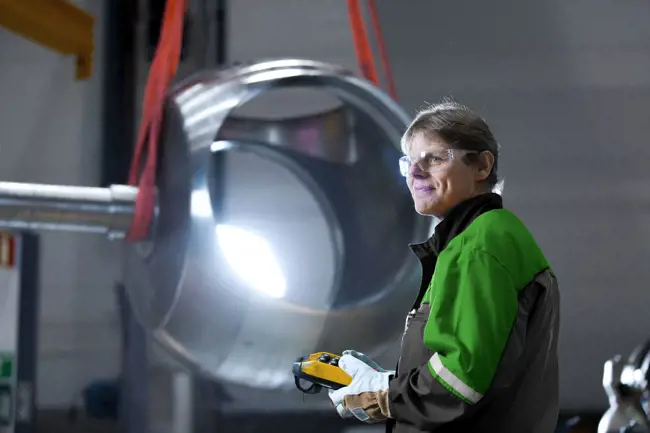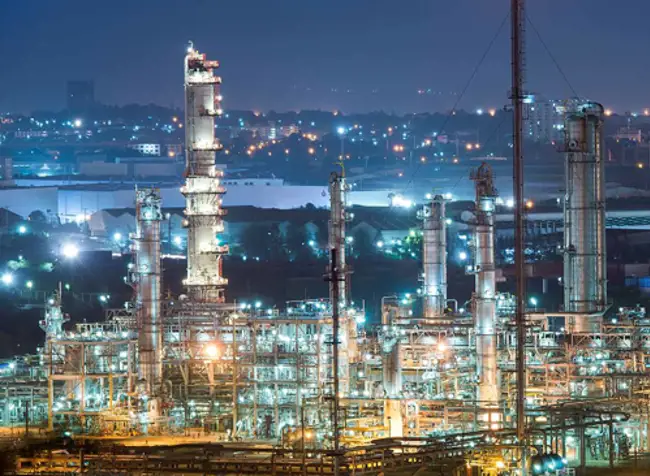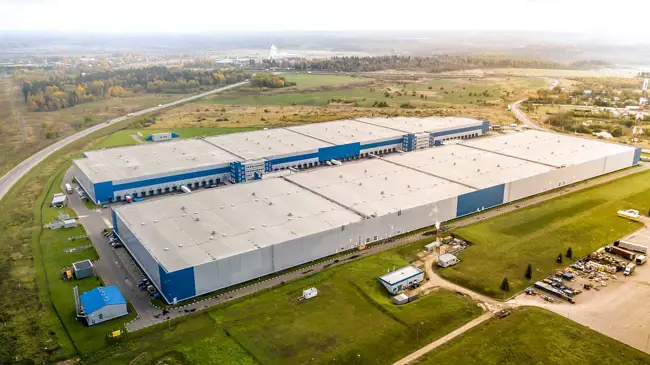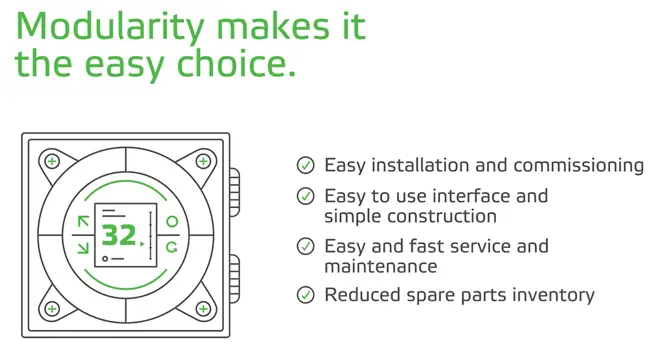Valmet’s proven flow control solutions deliver reliability for the energy transition
Apr 29, 2024

Valmet, the global developer and supplier of process technologies, automation and services, has long enjoyed strong patronage from the pulp, paper and energy industries, amongst others. And, thanks to proven expertise with industrial gases such as hydrogen, oxygen and chlorine, Valmet’s Flow Control business line is a ‘go-to’ valve source for the renewable energy sector. Ville Kähkönen and Andreas Pischke kindly discussed the valve needs of this emerging industry.
Hydrogen - the smallest of molecules – looks setto play a major role in the energy transition. As an energy carrier, hydrogen is ideal for the storage and transport of renewable energy. As a fuel, hydrogen can be used directly for heating or readily converted back into electricity. No wonder the German, Swedish and Finish governments have plans for a nationwide hydrogen pipeline network to power their industries.
But whilst hydrogen is now emerging into the public arena, it has of course been used by process industries for decades. For example, in sectors like refining and chemicals, where renowned valve brands in Valmet’s Flow Control business line (see box) have been tried and trusted for generations, indicates Ville Kähkönen (Director, Renewable Energy and Gases). “I see the new technologies such as green hydrogen and carbon capture becoming an increasing discussion point with clients. We can meet the most demanding of customers at eye level thanks to our extensive background in multiple processes, enabling us to propose tailor-made solutions.”
Colleague Andreas Pischke (Global Industry Manager, Renewable Energy and Gas) adds that as the hydrogen sector evolves, Valmet can take unique process conditions into account. “A typical example is material selection. If the customer lacks previous experience, we can use our material engineering skills to propose the best possible valve solution. We can also advise on appropriate valve selections as clients look to scale up from demo units to full scale processes.”
Hard on valves
With an extensive portfolio, Valmet has the right valve for the vast majority of applications. Comments Mr Kähkönen: “Our segment, butterfly, ball and other designs cover practically all valve needs in the energy transition, whether for hydrogen, oxygen or carbon dioxide service, withstanding temperatures of up to 700°C. Our valves have been proven in both atmospheric pressure and pressurized electrolysers, providing excellent control accuracy, safety and reliability.”
Mr Pischke adds that whilst hydrogen service is often perceived as a challenge for valves, Valmet has vast experience with an even more challenging gas – oxygen. “Oxygen really is in a league of its own. It is a strong oxidizing agent and compressing oxygen also provides ignition energy. Contaminants in the oxygen lines in an electrolysis plant, for example, are known to be a cause of fi res. Hence utmost cleanliness is required during valve assembly and installation. Thus far, we have over 30,000 valves in active oxygen service worldwide, with the fi rst deliveries dating back to 1928.”
Adsorption & absorption
Pressure and temperature swing adsorption technologies (PSA and TSA, respectively) are widely used to purify gas flows. Such processes - commonly deployed in electrolysis facilities and carbon capture - place very high demands on valves.
Mr Kähkönen: “Adsorption cycles are typically fast with up to four valve cycles every minute, whereby operating times can be under a second per operation. Additional challenges can include high-pressure differentials plus the need for absolute tightness. In extreme cases, valves might see 1 million cycles per year, making this a very severe service application. Customers also require long maintenance intervals between servicing for maximum plant effi ciency. To meet all requirements, Valmet’s R&D teams have worked very closely with customers for years to develop optimum flow control solutions, such as butterfly valve concepts under both the Neles and Jamesbury brands.”

With an extensive portfolio, Valmet has the right valve for the vast majority of applications.
Valmet is also a trusted source for valves for absorption processes, indicates Mr Kähkönen. “We have an impressive track record in CO2 absorption plants in refineries and industrial gas projects. One interesting recent project has been supplying control and on/off valves to a world-scale Direct Air Capture plant in a Northern country.”
BotH2nia delegation
Valmet’s standing as regards valves for hydrogen is reflected in a recent visit from BotH2nia – the Nordic collaboration striving to develop Europe’s largest hydrogen cluster. “We welcomed 75 representatives from municipal organizations and industry who wanted to see our valve solutions for the energy transition at first-hand. They had a particular interest in issues such as emission control, process safety and automation systems,” comments Mr Kähkönen. “We demonstrated how we can deliver flow control solutions that create real value, by maximizing reliability, accommodating feedstock variability and optimizing production, etc. Our overriding goal is to deliver value for the customers´ energy transition by being a trusted, long-term business partner. Our commitment does not stop once the valve has been delivered but extends throughout the valve’s lifetime.”

Supporting the carbon-neutral value chain: Valmet offers a wide range of valve solutions for P2X: hydrogen applications from green electrolysis to blue carbon capture, and the entire journey in between and beyond.
Overcoming hydrogen challenges
Successfully engineering and manufacturing valves for use with gaseous hydrogen requires vast expertise. Mr Pischke lifts the lid on just a few areas that demand attention. “Although hydrogen is not toxic, fugitive emissions is obviously very important given the potential for fire hazard. Hence proper selection of packings and seals is a must. Further, molecular hydrogen can, under certain conditions, dissociate on metallic surfaces and enter the lattice of the material as atomic hydrogen. The possibility for hydrogen embrittlement therefore needs to be considered during materials selection. Additionally, non-metallic materials can experience dimensional changes upon rapid decompression within gaseous service lines.”
For ease of transportation and storage, hydrogen can be liquefied to reduce its volume. Liquid hydrogen (LH2 for short) service requires very low temperatures. Although hydrogen embrittlement is not frequently observed, LH2 can present other challenges. For example, certain non-metallic as well as metallic materials can become very brittle. In addition, dimensional changes that occur in changing temperature from ambient to the service condition can impact internal tightness as well as external sealing points. All these points and more are factored into the design of Valmet’s valves, states Mr Kähkönen. “Our standing as a premium source of valves is based on our knowledge-based engineering and manufacturing. We have successfully delivered thousands of valves for hydrogen use since the 1970s, but perhaps more important is that our flow control and automation solutions are designed to be future proof. The products are optimized for the requirements of energy transition technologies such as electrolysis, absorption and adsorption as well as the further use of hydrogen, oxygen and carbon dioxide for the production of e.g. eFuels, ammonia or methanol. Customers can therefore have every confidence that our valves will be safe and effective choices for their hydrogen services.”
Text by David Sear, KCI Publishing. Text originally published in Hydrogen Tech World April 2024 issue.

Ville Kähkönen
Director, Renewable Energy and Gases Valmet Flow Control products and services

Andreas Pischke
Global Industry Manager
Valmet Flow Control business line
Valmet: flow control and automation offerings
PRODUCTS
• Rotary valves
• Linear valves
• On/off valves
• Control valves
• Actuators – pneumatic, rack & pinion
• Actuators – pneumatic, spring-diaphragm
• Actuators – electric
• Actuators – manual
• Intelligent valve controllers
• Positioners
BRANDS:
• Neles™
• Jamesbury™
• Flowrox™
• Neles Easyflow™
• Stonel™
• Valvcon™
VALVE SOFTWARE
• Nelprof valve sizing and selection software
AUTOMATION SOLUTIONS
• Process Controls
• Compressor Controls
• Advanced Process Controls
• Safety Systems
• PlantTriage
• Energy Management System
• Training Simulators
• Data Management

Valmet's automation solutions
A key player in automation
Valmet is a key player in the automation market for hydrogen solutions, with our Valmet DNA Automation System standing out as a comprehensive solution for the ever-growing hydrogen industry. Our system is celebrated for its robust cybersecurity, certified to ISO 27001 and IEC 62443-4-1 standards, ensuring protection against a wide array of threats. Its architecture supports a vast range of industry-standard fi eld buses and connectivity options, making it a versatile choice for various industrial applications.
Data and control
The Valmet DNA system is designed to manage and analyze the vast data generated by modern process plants, offering tools for efficient engineering and maintenance while maintaining ease-of-use. Our system’s adaptability and security features make it the go-to option for the hydrogen market, aligning with the industry’s need for reliable and secure automation solutions.
The ultimate partner
Choosing Valmet as a supplier for both valves and automation systems offers significant advantages. This integrated approach ensures seamless compatibility and optimized performance across the control and valve systems, enhancing operational efficiency and reliability. It simplifies procurement and maintenance processes, providing a streamlined solution for industrial automation needs.
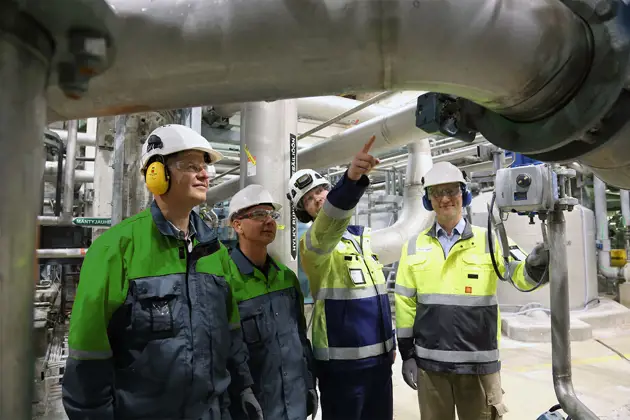
Subscribe to our newsletter
Subscribe now to our 'Go with the flow' newsletter and receive the latest insights directly to your email.
Subscribe